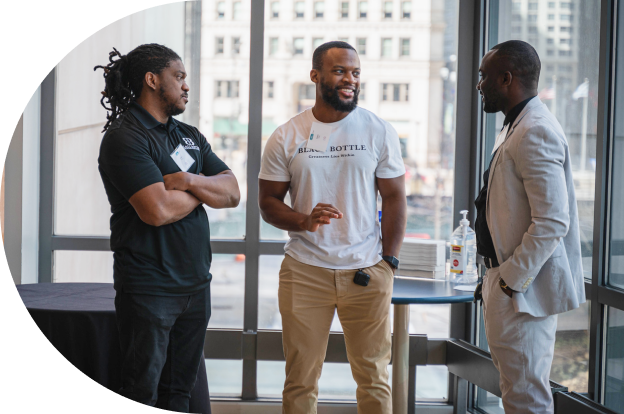
Four Ways to Successfully Lead a Remote Workforce
Entrepreneur’s Organization is a global network of over 13,000 business owners. Learn how EO Chicago helps over 100 business owners grow.
Written by Larry Prince, CEO of PrinceLeadershipTM. A version of this article originally appeared in New Jersey Business magazine.
The current health crisis has thrown our world into disorder. No longer can teams stroll into work ready to interact, exchange ideas and take care of business. We’re leading our businesses through uncharted territory. By now, most of you have set your employees to work remotely.
Let’s explore best practices to make remote work function as seamlessly as possible.
Knowing that companies already do this successfully should make you confident that your company and your employees will adapt to these changes. The key is to prepare your people for a smooth transition, by adhering to four leadership practices.
4 Tips for Leading a Remote Workforce
1. Be present: Keep in mind that your people are socially removed from their peers. So, check in frequently. The idea is to be a source of comfort and business focus—and not to micromanage. Set up a consistent phone or video chat schedule with each person and as a team.
Learn how they are doing. Ask—what they need to be successful, while not in the office. Ask—their input, to develop new ideas and solutions enabling business to move forward. Think through how best to coach each person individually.
Here is what the CEO of a home health company did to facilitate the process. “I set up morning huddles with my management team. Connecting each day at the same time will keep us focused, allow me to know what is going on with my people and provide them an opportunity to share with each other.”
2. Reinforce the organization’s purpose: Companies with a strong sense of purpose are sustainable companies and tend to weather uncertain times.
Reinforce your organization’s values, goals and core mission and how this purpose supports your people, your community, your customers and your business. This will ground your people and team in what is most important—a common cause aligned to achieve specific and measurable goals.
Doing so helps to set priorities and make better business decisions—and to keep your culture in motion.
A director of retail store sales addressed the issue with his staff by reviewing their mission and values. The exercise reinforced for them that the community needs them and the products they provide. He added, “We bring value. Rather than taking a passive position, we are now actively engaging our customers online.”
EO members, visit the #EOTogether site for the latest webinars and resources from the EO community. We’re in this together.
3. Clarify roles and expectations: Your people are now working under unfamiliar conditions—and removed from their colleagues. Ensure that they’re absolutely clear about their role, responsibilities and expectations, since you are not with them each day in person.
Standardize expectations by developing and communicating guidelines for working remotely. Also, review and update workflow processes.
A director of operations for a charitable organization offered this analysis: “I recognized that working remotely is throwing off my people’s focus. We regrouped and spent extra time ensuring each person is absolutely clear of what to do, why it’s important and how to do it from home. The details matter—and process matters.”
4. Support employee connectivity and communications: Create ways for employees to connect with each other. For example, set up commitment partners—teams of at least two people who are responsible for specific actions and problems to solve. Each team reports back to their peer teams with practices they have learned along the way. This will elevate teamwork and lessen the sense of isolation.
In addition, set up clear communications channels between employees and with management—create the why, what, how and when to keep each other informed. This is another way of maintaining your culture and maximizing employee productivity and satisfaction.
The COO of a health care company devised this solution with the help of his consultant. Since they are categorized as an essential business, they created three teams: Team A and B rotate days in the office and team C, about half their workforce, will work exclusively from home. This provides a blend of what is right for the community, their employees and for the business.
Along the transition path, learn what is working and what needs adjustment. This will strengthen your chance of making it through to the other side. By following these four proven practices, you are helping your people, your community and your business achieve transitional success.
Don’t be surprised at some future point to find yourself a stronger organization.
This article was originally published on the EO Global Octane Blog.
Entrepreneur’s Organization is a global network of over 13,000 business owners. Learn how EO Chicago helps over 100 business owners grow.

